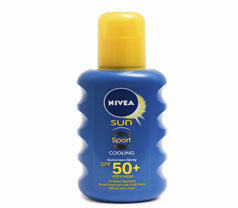 You can learn a lot about a bottle of sunscreen just by looking at its label.
You can learn a lot about a bottle of sunscreen just by looking at its label.
Specifically, checking the label helps you choose a sunscreen that reduces your risk of sunburn, early aging and skin cancer. Here's a closer look at today's sunscreen labels, with hints on how to make them work for you:
Look for broad-spectrum protection. These words mean that the sunscreen helps guard against ultraviolet A and ultraviolet B rays. Both kinds can damage skin and lead to wrinkles and skin cancer. Only products that pass a test can carry this claim.
Check the sun-protection factor (SPF). Watson Clinic’s dermatologists recommend a broad-spectrum SPF 30 sunscreen.
Heed the warning. Sunscreens rated lower than SPF 30 or that don't offer broad-spectrum protection must warn that they guard only against sunburn—not skin cancer and early aging.
Choose a water-resistant product. The label now states whether the sunscreen resists water for up to either 40 or 80 minutes, at which time you'll need to reapply. Claims that a product is waterproof or sweatproof aren't allowed anymore because there's no way to prevent all of the sunscreen from coming off your skin when you swim or sweat. The term sunblock is also considered misleading and banned from sunscreen bottles.
Rub it in. Once you've chosen the right sunscreen, be sure to apply it to exposed skin whenever you plan to spend time in the sun. And use plenty—about 1 ounce (enough to fill two tablespoons). Don't forget to rub some more on every two hours—sooner if you get wet.
Schedule an appointment with a member of
Watson Clinic's dermatology team for more information on skin health and sun safety. Call 863-680-7267.
Sources: American Academy of Dermatology; American Cancer Society